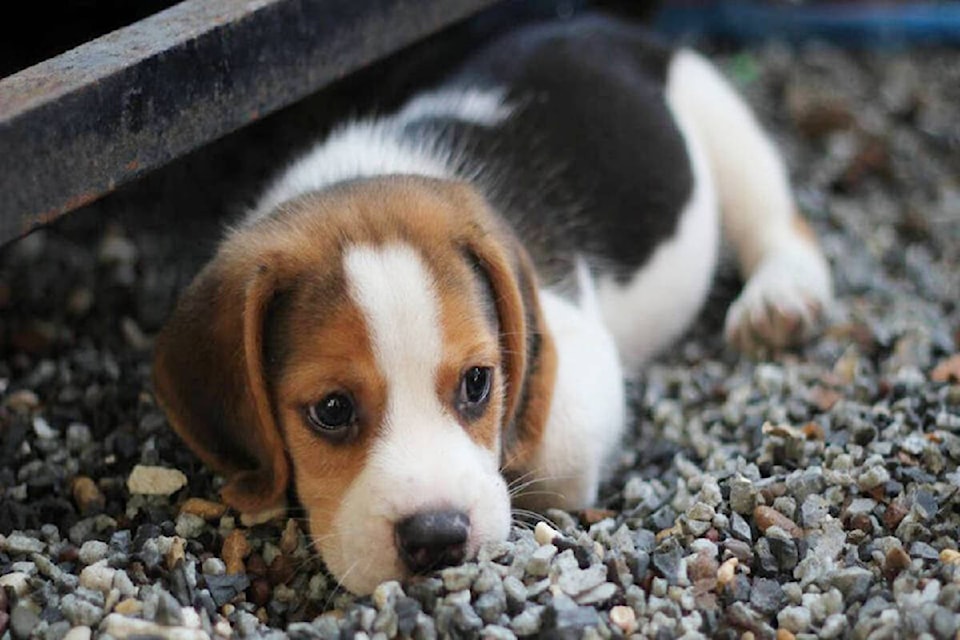A potential canine parvovirus outbreak has killed several dogs in the Tla-o-qui-aht First Nation community of Ty Histanis and the Nation is urging all dog owners to keep their pets contained and monitored.
“This deadly virus spreads quickly and can transfer to cats and the wolf population too. It can also spread from one community to another on objects like kennels, clothing etc,” read a statement from the Tofino area Tla-o-qui-aht First Nation on Aug. 31.
“All dogs in Ty Histanis, Esowista and Opitsaht MUST be contained to their property and monitored for symptoms of Parvo so we can get on top of this painful, dog killing virus.”
The statement adds that anyone unable to keep their dog contained should immediately contact the Coastal Animal Rescue and Education Network for assistance at 250-266-9663.
Symptoms include vomiting, diarrhoea, low energy, rapid weight loss and high heart rates.
CARE co-founder James Rodgers told the Westerly News on Sunday that at least seven dogs have died over the past two weeks with further sick dogs being reported and testing is underway to confirm whether canine parvovirus is the cause.
“There’s definitely something going around and all the symptoms that we’re hearing are pointing towards parvo,” he said. “What typically happens with parvo is the dogs end up dying a painful death from dehydration because of the vomiting and diarrhoea.”
He added that CARE worked with the Nation to organize an emergency vaccination clinic in Ty-Histanis on Monday, Sept. 4.
“The answer to parvo is vaccinations,” he said. “It’s not about getting rid of parvo necessarily, it is about vaccinating the dogs so that they’re safe from parvo…It’s important to try to keep it as contained as possible but, at the same time, really the answer is get every dog vaccinated that’s able to be vaccinated.”
He added the virus “spreads fast and it kills fast,” and that the clinics would include homecare and treatments for dogs experiencing symptoms.
“One of the big worries here and why we want to get on this as fast as possible is that it is a canine virus, so we don’t want to see it spread to the wolf population,” he said. “That’s a big concern given that these communities are surrounded by wolves that of course range across the peninsula.”
He said the Nation and CARE began working on a plan late last week.
“The Tla-o-qui-aht administration is really on top of this kind of thing. They take community health and safety very seriously, so they had their teams spring into action both with getting the word out about the spreading of the virus and also disposing of the bodies safely, because that’s a big thing to protect the wolves and everyone else,” he said.
He said a vet team is expected to arrive in Ty Histanis around 10 a.m. on Sept. 4 and RSVP links are being sent to residents of Ty Histanis and Esowista with another clinic in Opitsaht being considered.
He added residents in neighbouring Tofino and Ucluelet should also be keeping an eye on their dogs, watching for symptoms and is urging all West Coast dog owners to make sure their pets are properly vaccinated.
“The name of the game here is vaccinate, vaccinate, vaccinate,” he said.
Don’t miss out on reading the latest local, provincial and national news. Join our community and receive daily news alerts & breaking news, right to your inbox. www.westerlynews.ca/newsletters.
READ MORE: Confirmed case of Parvovirus could spread through Tofino-Ucluelet puppy population
READ MORE: Discarded cannabis a “frequent” threat to pets in Tofino-Ucluelet
READ MORE: Parvovirus puts absence of veterinarian in Tofino and Ucluelet under microscope
